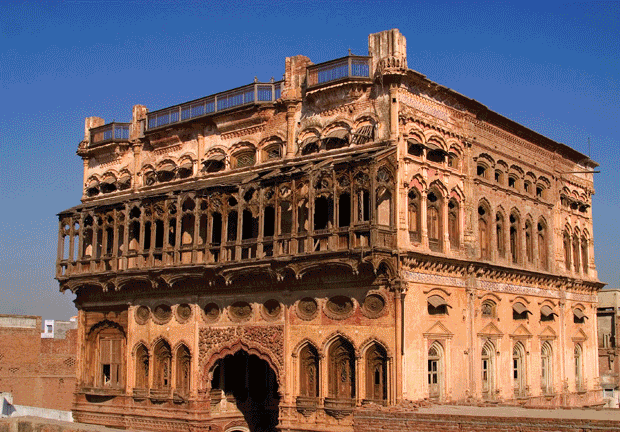Punjab has a variety of magnificent historical buildings with extraordinary structures. Chiniot–a historic city of Punjab–is a true treasure of magnificent palaces, mosques, and eye-catching buildings.
Omar Hayat Mahal also known as the “Taj Mahal” of Chiniot is one such structure that flaunts its majesty. Just like the Taj Mahal, it is unique in its glory, and sadly both serve as a burial ground for the notables.
A trader, Sheikh Omar Hayat decided to construct the palace for his son in 1923 for which he gathered famous artisans who worked day and night to complete the palace.
The work on the structure was finished by 1935 but sadly, Sheikh died the same year, leaving behind his wife, Fatima, and their only son, Gulzar, who was then 15.
Two years after the death of her husband, the grieving family, including Omar’s widow, Fatima, and son, Gulzar, moved into the residence.
Gulzar’s wedding was fixed, and the family hoped for a fresh start but he died of carbon monoxide poisoning the very next day after the wedding ceremony. His mother was devastated and had him buried right here on the ground floor of the palace.
Exactly one year after her son’s death, Fatima died of heartbreak. She, too, is buried in Omar Hayat Palace, right beside her child.
The serial tragedy led the Sheikh family to believe that the building was jinxed, and they abandoned it.
The owner of the palace died before he could shift in it and his family passed away soon after, therefore, everyone in the Sheikh family and locals feels the place has an evil vibe to it.
As per records, after the owners left, the building was used as a children’s home. 1940 onwards till its dilapidated condition forced the orphanage’s administration to relocate.
About half a century later, in 1989, the government declared the palace, spread over 3,267 square feet, a heritage site.
The distinctive construction of the palace has attracted thousands of tourists over the years. This masterpiece of architecture took around 12 years to complete at a cost of approximately Rs400,000.
The structure of walls has been made from a paste which includes mud, lentils, white clay, and the juice of molasses. The palace was designed by famed craftsmen Rahim Bakhsh Pirjah, and Elahi Baksh Pirjah who Ahmad states were known as the “local Michelangelo”.
Colorful frescos, decorated ceilings, and elaborate rooms also captivate the imagination of visitors who are amazed by the grace and magnificence of the palace.
